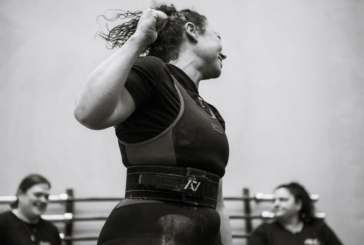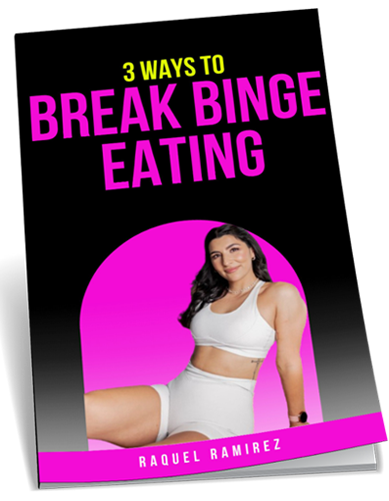Strength training is one of the most empowering and transformative things you can do for your body, mind, and long-term health. But for many women new to fitness, the weight room can feel intimidating. Questions like “How do I start strength training as a woman?”, “What weights should I use first?” or “How can I lift safely?” are common—and valid.
The good news is that strength training doesn’t require lifting heavy from day one. With proper guidance, safe lifting techniques, and consistent progression, any woman—at any age or fitness level—can gain strength, improve muscle tone, and build confidence. At Ladies That Lift, we help women begin their strength training journey with expert-led programs that focus on education, empowerment, and technique.
This beginner’s guide will walk you through the essential steps to begin your lifting journey safely and effectively.
Why Strength Training Matters for Women
Before we get into the how-to, let’s address why strength training is so important, especially for women:
Boosts metabolism
Improves fat loss results
Builds lean muscle, not bulk
Increases bone density and joint health
Improves mood and mental health
Supports longevity and injury prevention
Unlike common myths, lifting weights won’t make you bulky. In fact, female strength gains develop at a steady, controlled rate—shaping a leaner, stronger physique over time.
Step 1: Start with Your “Why”
Before you lift a single weight, clarify your goals. Are you training to feel stronger? Improve posture? Prevent injury? Lose fat? Defining your “why” helps shape the plan that will keep you motivated and consistent.
Step 2: Learn the Basics of Proper Form
Understanding beginner lifting form is crucial for safety and long-term progress. Mastering technique with lighter weights lays the foundation for future gains while reducing the risk of injury.
Foundational Movements for Beginners:
Squat – Targets glutes, quads, hamstrings, and core
Deadlift – Builds posterior chain (back, glutes, hamstrings)
Push – Includes push-ups, bench press, shoulder press
Pull – Includes rows, lat pulldowns, assisted pull-ups
Core – Planks, bird dogs, anti-rotation exercises
Each of these movements mimics real-life actions—so training them not only makes you stronger, but also helps with daily function.
Step 3: Choose the Right Weights
One of the most common beginner questions is “what weights to use first?”
Here’s a rule of thumb:
Start with a weight that feels challenging by the 10th–12th rep, but not so heavy that your form breaks down.
Tips:
If you’re brand new, start with bodyweight or resistance bands
Move to dumbbells between 2–5 kg (5–10 lbs) depending on the exercise
Focus on quality of movement over quantity of weight
As you grow more comfortable, you can increase resistance gradually. You should aim to improve either reps or weight every 1–2 weeks for steady female strength gains.
Step 4: Learn Safe Lifting Techniques
The most important part of your strength training journey is learning safe lifting techniques female beginners can follow to avoid injury.
Key Safety Tips:
Warm up before every session (dynamic stretching + mobility drills)
Engage your core in every lift— not only for stability but this protects your spine
Use controlled movement, especially on the lowering phase
Avoid rushing your sets—move with intent
Keep a neutral spine in squats, deadlifts, and overhead lifts
Don’t hold your breath—exhale on effort (lifting), inhale on release
Working with a coach or using a beginner program that prioritizes technique is highly recommended. You can see examples of real progress by visiting these beginner-friendly strength training results.
Step 5: Structure Your Weekly Routine
As a beginner, consistency matters more than intensity. You don’t need to train daily—2 to 3 full-body sessions per week is plenty to start.
Sample Weekly Routine:
Day 1: Full-body strength (squats, push-ups, rows, planks)
Day 2: Rest or light activity (walking, yoga)
Day 3: Full-body strength (deadlifts, overhead press, lunges, bird dog)
Day 4: Rest
Day 5: Optional conditioning or core focus
Weekend: Active recovery or rest
Each workout can be 30–45 minutes. Focus on gradual improvement—either lifting slightly heavier or adding a rep or two every week.
Step 6: Don’t Skip Recovery
Rest is not lazy—it’s essential. Muscle growth happens after you train, during recovery. Skipping rest days can lead to burnout or injury, especially in beginners.
Recovery Tips:
Sleep 7–9 hours nightly
Stay hydrated and eat protein-rich meals
Stretch or foam roll tight areas
Listen to your body—take extra rest if you feel overly sore or fatigued
Step 7: Track Progress Without Obsessing Over the Scale
Progress looks different for everyone. For women, strength gains may not always show up on the scale—especially as muscle increases and fat decreases.
Ways to Measure Progress:
Lifting heavier weights
Doing more reps
Improving posture or mobility
Increased energy and confidence
Progress photos or how clothes fit
Remember: focus on performance, not just appearance.
Step 8: Consider Joining a Supportive Strength Community
Lifting alone can feel overwhelming. One of the best ways to stay committed is to train with other women who share similar goals.
A structured strength training community for women offers:
Proper coaching and supervision
Beginner-friendly programming
Safe space to ask questions
Motivation and accountability
To learn more about starting your journey with expert guidance, reach out through the Ladies That Lift contact page to get matched with a beginner-friendly coach or class.
Final Thoughts: Your Strength Journey Starts Today
So, how do I start strength training as a woman? You begin by learning the basics, focusing on form, and building confidence one lift at a time. Whether your goal is to feel stronger, look leaner, or simply challenge yourself in new ways, strength training offers a rewarding, sustainable path forward.
Start light, move with intention, rest when needed, and celebrate your progress. And most importantly—know that you don’t have to do it alone. Explore structured beginner-friendly programs at Ladies That Lift and discover a community where women lift each other—literally and figuratively.
Frequently Asked Questions (FAQs)
Start with bodyweight exercises or light dumbbells, focusing on foundational movements and perfecting your form. Aim for 2–3 short sessions per week and build consistency before increasing weight. If you want to take this further and skip all the guess work, get a coach, we have plenty of coaching options available here at Ladies That Lift.
No. Due to hormonal differences, women don’t build muscle mass the same way men do. Instead, strength training will make you leaner, tighter, and stronger.
Begin with a weight you can lift for 10–12 reps with good form. For many women, this means 2–5 kg (5–10 lbs) dumbbells for upper body exercises and slightly heavier for lower body.
Watch videos from reputable trainers, use mirrors to check your posture, or work with a coach. Proper form means moving with control, keeping a neutral spine, and engaging your core throughout the lift.
Yes. Strength training increases lean muscle mass, which boosts metabolism. When paired with proper nutrition, it can help you lose fat and reshape your body.





